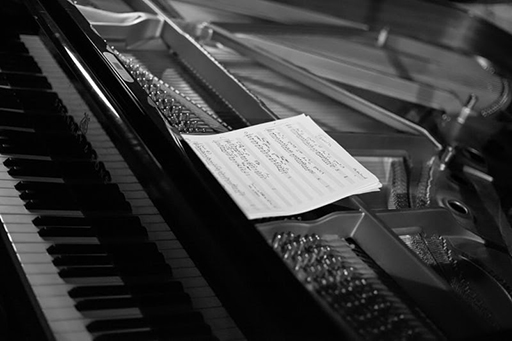Chord Charts
By M. L. Wolf
What is a Chord Chart?

A chord chart is basically a chart or diagram that can help you to find chords to use on a musical instrument. It will give you the exact notes that are in each chord so you can easily use that chord however you need to. In this article you’ll find a keyboard chord chart that gives you all the notes that are used to make up each of the named chords. You may want to print out a chord chart and keep it handy.
Chord charts are a very useful tool for song writing. When you have a chord chart sitting in front of you it is very easy to use the notes of the chords to write melodies. You can also use chord charts to help you with harmonizing your tune. We’ll look at examples of how you can use your chord chart to do each of these things.
Write chords faster with Captain Chords
- Write your own chord progressions
- Apply rhythms to your chords
- Set your Key and Scale for the entire song
- Explore different chords and discover your favorite combinations
- Compose music and write your own songs
- One touch plays 3 notes of the chords
A Keyboard Chord Chart
A keyboard chord chart shows you all the notes you need to make a chord of that name. For example, to make a C+ ( C Major) chord you need a C, E and G. The notes on this keyboard chord chart are colored so you know which notes make up that particular chord.
How Do I Use a Chord Chart?

Chord Charts for Melody Writing
If you look at the chord chart above you will notice how the notes you need for each chord are colored in. Reading the notes from left to right, you’ll see that the first note colored in is the name of the chord. Decide what key you want your song to be in. You’ll need to know what chords are used in that key. You also should know what chord progressions are commonly used in the key that you are working with. We have other articles that explain chord progressions in more detail that you may want to read.
Write down the chords you are going to need for your chosen key. For example, in the key of G+ ( G Major) you will need the chords of G, C and D at the very least. Most songs begin in the tonic chord. (first note of the key you are in) You can start to write a melody just using the notes of those chords. Perhaps try repeating one or more notes and add in a catchy rhythm. It doesn’t need to be very complex at first. Our Captain Melody is a great plugin that will help you crank out those great tunes.
Chord Charts for Bass Lines

A chord chart can also help you to write a bass line. A very simple bass line can take the root note ( the first note of your chord) and just repeat it until you change your chord. Then your next bass note can be the root of your next chord, and so on throughout your whole song. This won’t be the most exciting bass line however it will work and give you something to build on. To add a little more interest to your bass line, refer to your chord chart for other notes that you can use. In a regular three note triad there are two more notes in the chord that are available to use; in a 7th chord you have three more notes that you can use. There are lots of ways to construct a bass line, practice until you come up with something that you like.
Here are some examples of a rather simple bass lines using mainly notes from your primary chords.
We have an article on our Wiki site about how to construct a bass line.
Using Chord Charts to Add Harmony

A chord chart is most useful for adding harmony to your song. By referring to your chord chart you can easily see what notes you need to be using in any chord. We have several good articles on how to use various chords to add harmony to your song.
Try using our plugins to see how a chord chart can enable you to be on your way to writing the next big hit!
Write your own tracks using Captain Plugins
It’s super easy to create your own ideas from scratch. Visit the official Captain Plugins homepage and see how they’ll help you explore music and write your own original productions.
